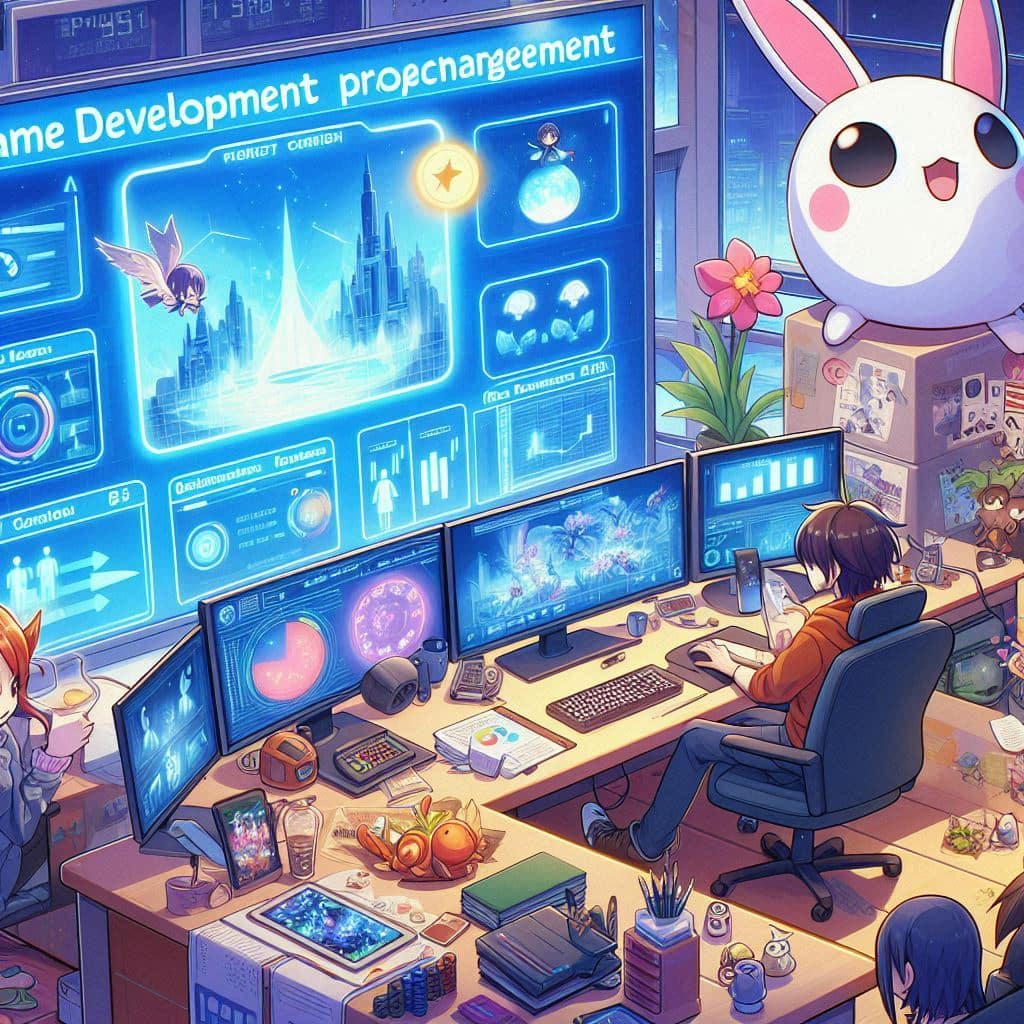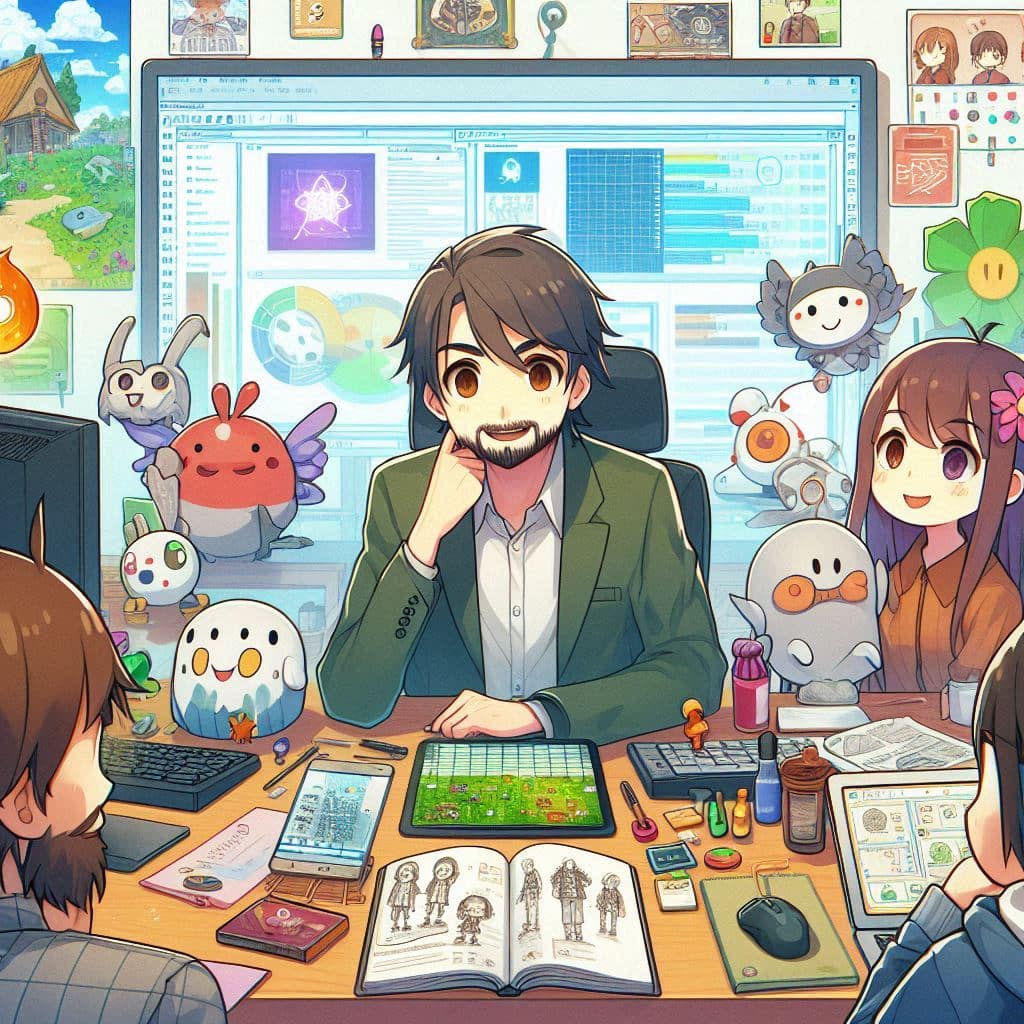Introduction
Managing a game development project can feel like herding cats – creative, passionate, and sometimes chaotic cats. But with the right strategies and tools, you can streamline your process, keep your team on track, and bring your vision to life. In this guide, we’ll dive into essential tips and tools for effective game development project management, helping you plan, schedule, and collaborate more efficiently. Whether you’re an indie developer or part of a large studio, these insights will help you manage game projects and boost your game dev productivity.
1. Planning Your Game Development Project

1.1 Define Your Vision and Goals
Every great game starts with a clear vision. What do you want your game to achieve? Who is your target audience? Answering these questions will help you define your project’s goals and set a solid foundation.
- Create a Game Design Document (GDD): This comprehensive document outlines your game’s concept, gameplay mechanics, story, characters, and art style. It serves as a reference for your team throughout development.
- Set SMART Goals: Ensure your goals are Specific, Measurable, Achievable, Relevant, and Time-bound. This framework helps you track progress and stay focused on what’s important.
1.2 Scope and Budget Planning
- Define the Scope: Clearly outline the features and content your game will include. Avoid feature creep by sticking to your initial plan and adding extra features only if time and budget allow.
- Budget Wisely: Allocate funds for development, marketing, and unexpected expenses. Monitor your budget regularly to avoid overspending.
1.3 Risk Management
- Identify Risks: List potential risks, such as technical challenges, team turnover, or funding issues. Develop contingency plans to address these risks if they arise.
- Regular Reviews: Hold regular risk assessment meetings to update your risk management plan and ensure everyone is aware of potential issues.
Read More: Enhancing Player Experience with Game Analytics(Opens in a new browser tab)
2. Scheduling and Milestones
2.1 Create a Project Timeline
- Use Gantt Charts: Gantt charts provide a visual timeline of your project’s tasks and milestones. Tools like Trello, Asana, and Microsoft Project can help you create and manage Gantt charts.
- Set Milestones: Break your project into manageable phases, such as pre-production, production, and post-production. Set clear milestones for each phase to track progress and keep your team motivated.
2.2 Task Management
- Prioritize Tasks: Use the MoSCoW method (Must have, Should have, Could have, and Won’t have) to prioritize tasks and ensure your team focuses on the most critical elements first.
- Delegate Responsibilities: Assign tasks based on team members’ strengths and expertise. Use project management tools to track assignments and deadlines.
2.3 Time Management
- Implement Agile Methodologies: Agile practices, such as Scrum and Kanban, promote flexibility and iterative development. Regular sprints and stand-up meetings help keep the team aligned and productive.
- Avoid Crunch Time: Plan realistically to prevent burnout. Ensure your timeline includes buffer periods for unexpected delays.
3. Team Collaboration
3.1 Foster Communication
- Use Communication Tools: Tools like Slack, Discord, and Microsoft Teams facilitate real-time communication and collaboration. Encourage open and transparent communication among team members.
- Regular Meetings: Hold daily stand-ups, weekly check-ins, and monthly reviews to keep everyone on the same page and address any issues promptly.
3.2 Encourage Team Bonding
- Team Building Activities: Organize regular team-building activities to strengthen relationships and improve collaboration. These can range from casual hangouts to structured team-building exercises.
- Promote a Positive Culture: Foster an inclusive and supportive work environment where team members feel valued and motivated.
3.3 Feedback and Iteration
- Implement Feedback Loops: Regularly collect feedback from team members, playtesters, and stakeholders. Use this feedback to make informed decisions and iterate on your game.
- Continuous Improvement: Encourage a culture of continuous improvement by celebrating successes and learning from failures.
Read more: Common Mistakes to Avoid in Game Development(Opens in a new browser tab)
4. Tools for Game Development Project Management
4.1 Project Management Software
- JIRA: Ideal for larger teams, JIRA offers robust project tracking and issue management features. It’s widely used in the gaming industry for its scalability and customization options.
- Trello: Trello’s visual boards and cards make it easy to organize tasks and track progress. It’s great for smaller teams and simpler projects.
- Asana: Asana offers a balance of task management and collaboration features. It’s suitable for teams of all sizes and integrates with various other tools.
4.2 Version Control Systems
- Git: Git is essential for tracking changes to your codebase and collaborating with multiple developers. Platforms like GitHub and GitLab provide additional features for project management and collaboration.
- Perforce: Perforce is a powerful version control system used by many large studios. It excels at handling large binary files, making it ideal for game development.
4.3 Collaboration Tools
- Slack: Slack is a versatile communication tool that integrates with many other software tools. It supports text, voice, and video communication, making it a one-stop solution for team collaboration.
- Discord: Originally designed for gamers, Discord has become a popular choice for game development teams. Its voice channels and screen sharing features are particularly useful for remote teams.
- Miro: Miro is an online whiteboard tool that facilitates brainstorming and collaboration. It’s great for visualizing ideas and working together in real-time.
5. Use Case Scenario: Managing an Indie Game Development Project
Let’s explore a practical example of managing an indie game development project using the tips and tools discussed above.
5.1 Project Planning
Imagine you’re leading a small team to develop a 2D platformer game. You start by defining your vision: a charming, challenging game with unique mechanics and a whimsical art style. You create a Game Design Document (GDD) detailing the gameplay, story, characters, and art style.
5.2 Scheduling and Milestones
You create a Gantt chart to outline your project’s timeline, breaking it into pre-production, production, and post-production phases. Each phase has clear milestones, such as completing the game’s core mechanics, finalizing art assets, and conducting playtests.
5.3 Team Collaboration
Your team uses Slack for daily communication and Trello for task management. Regular stand-up meetings and weekly check-ins ensure everyone is aligned and aware of their responsibilities. You also organize monthly game nights to foster team bonding.
5.4 Feedback and Iteration
Throughout development, you collect feedback from playtesters and team members. You implement an Agile workflow with bi-weekly sprints, allowing you to iterate on the game and make improvements based on feedback.
5.5 Tools Utilized
- Project Management: Trello for task management and Gantt charts for timeline visualization.
- Version Control: GitHub for version control and collaboration.
- Communication: Slack for daily communication and Miro for brainstorming sessions.
Conclusion
Effective project management is crucial for the success of any game development project. By defining your vision, planning meticulously, scheduling realistically, and fostering strong team collaboration, you can manage game projects more efficiently and boost your game dev productivity. With the right tools and strategies in place, you’ll be well-equipped to bring your game development dreams to life.
Remember, every project is unique, so be flexible and adapt your approach as needed. Happy developing!
By following these guidelines, you’ll be better prepared to tackle the challenges of game development and lead your team to success. Whether you’re a seasoned developer or just starting, effective project management can make all the difference in creating a game that stands out and delights players.



